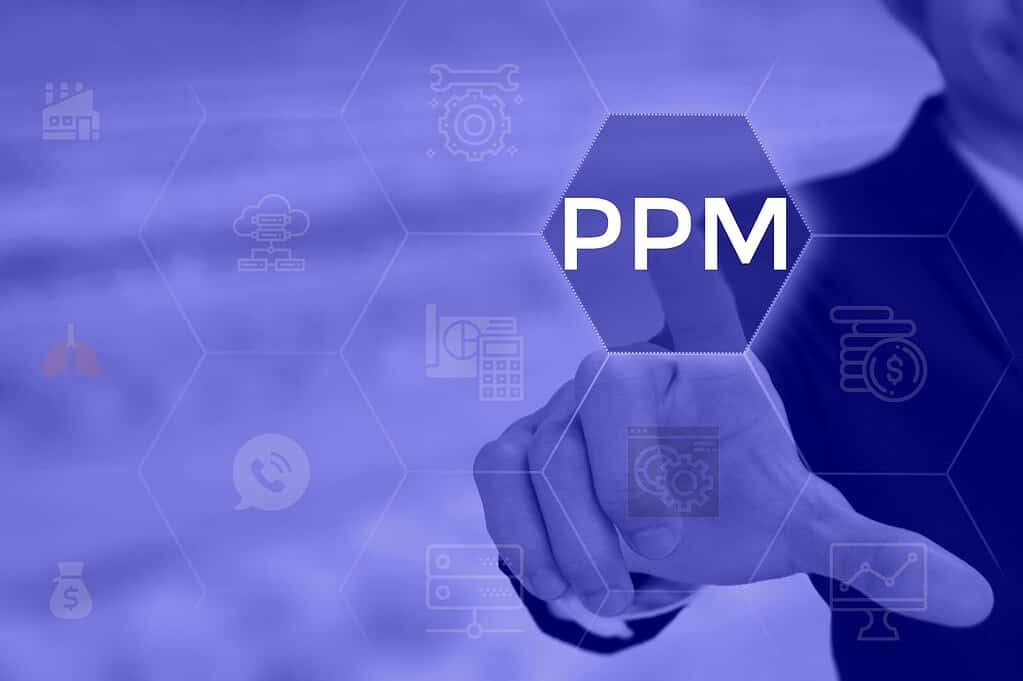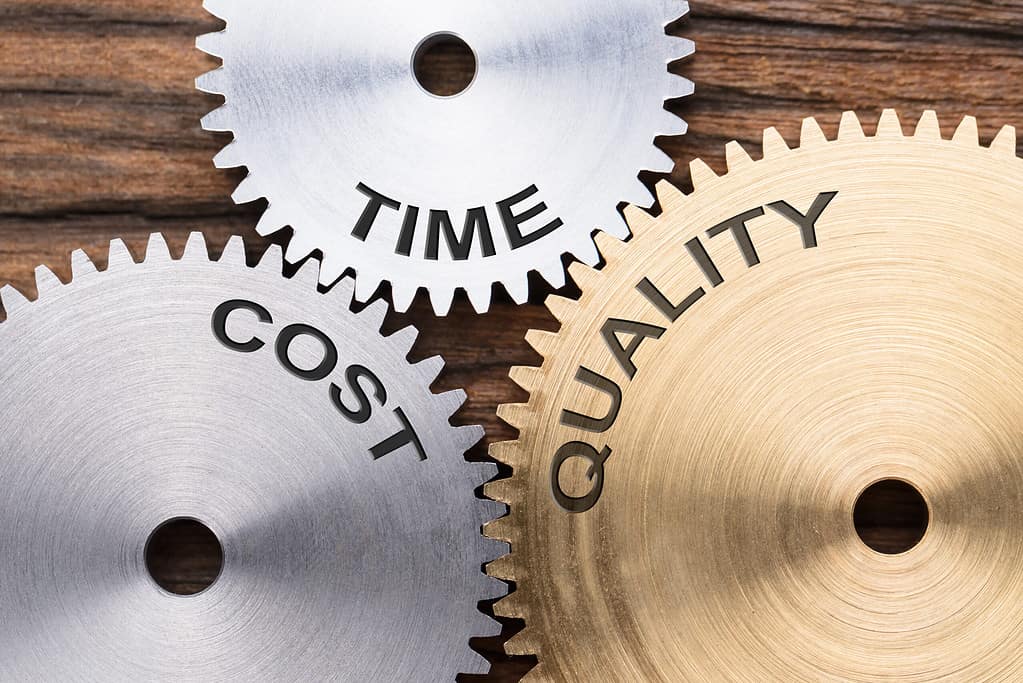Category: Methodology

Best Practices for Accountability in the Workplace
Updated:Accountability is everything. It builds trust, reputation and responsibility and is the foundation of every good business practice.
Read more »
Level the Playing Field with the Nominal Group Technique
Updated:Finding solutions to problems can often be better as a group effort. There are several group methods for addressing an issue. One option is the nominal group technique.
Read more »
How to Make Process Performance Management Work for Your Business
Updated:You’ve heard the saying “everything is a process.” It’s a diplomatic way of saying something is taking too long, is too inconvenient, or that an outcome is out of one’s control. But processes are not carved in stone. They are meant to be continually analyzed, taken apart, cleaned up, enhanced, and optimized. And business leaders who constantly engage with their company’s processes do so because it’s how they are empowered to control every detail, every outcome, every time.
Read more »
The Power of Collaboration: Exploring the Function Analysis System Technique
Updated:It is important to be able to see your processes, projects, and services from every conceivable viewpoint. Putting together FAST diagrams can achieve this while doing it in a collaborative and potentially even fun way.
Read more »
What is Muda? Understanding the Concept of Waste Reduction
Updated:Short description: Before you can improve anything, you’ve got to be able to identify the areas that you can improve. This is what the Lean Six Sigma principle of muda is all about: identifying where waste is happening and eliminating it.
Read more »
Optimize the Total Costs of Quality
Updated:Don’t let the costs of poor quality eat your profits for breakfast. Learn how to stay competitive by understanding the components of TCOQ and how to optimize them – and ultimately the quality of your product or service.
Read more »
Scrum: A Rugby Move Turned Game-Changer in Process Improvement
Updated:The word scrum (short for scrummage) is usually used in the context of rugby. But how would it be used when talking about process improvement? Let’s find out. In rugby, a scrum is a method of restarting play after the ball goes out of bounds or there is a penalty. It involves players packing closely […]
Read more »
Discover the Power of The Theory of Inventive Problem Solving (TRIZ)
Updated:Sometimes you really need to look at problems in a creative and innovative manner. TRIZ is a problem-solving approach that fosters invention for project teams who have become stuck while trying to solve a business challenge. TRIZ (Teoriya Resheniya Izobretatelskikh Zadach) is a problem-solving methodology that was developed in the former Soviet Union by Genrich […]
Read more »
Tree Diagram
Updated:Is there a simple graphical tool for looking at a series of linked hierarchical activities? Yes, a tree diagram would be a good one to use. Let’s see how it would work. If you have a series of hierarchical tasks and subtasks to complete before you reach some objective, then a tree diagram would allow […]
Read more »
The Importance of SS Product Reports in Quality Assurance
Updated:An SS product report is a critical document that summarizes the results of the product development process, including quality, reliability, and performance. Understanding SS Product Reports The Six Sigma methodology is a highly effective process improvement approach that has been widely adopted across various industries. It provides a data-driven and customer-focused approach to reduce defects […]
Read more »
Creating Effective Specifications: What to Include and How to Structure Them
Updated:It is important that you clearly specify your expectations about a company process or product. These detailed expectations are called specifications and serve as a guide as to how well you are satisfying both internal and external expectations. A specification (spec) is a detailed description of the requirements, characteristics, and features of a product, service, […]
Read more »
Reengineering: A Methodology to Create a More Efficient Organization
Updated:In the spirit of continuous improvement, re-engineering is the process by which you can identify, analyze, and re-design your organization’s core business processes for the purpose of achieving improvements in critical performance measures. Reengineering, also known as business process reengineering (BPR), is a methodology that focuses on the fundamental redesign of business processes to achieve […]
Read more »
Sufficiency: Achieving More with Less for Improved Outcomes
Updated:In today’s fast-paced business environment, organizations are constantly looking for ways to improve efficiency, cut costs, and optimize their operations. Lean Six Sigma is a methodology that has been widely adopted by companies in various industries to achieve these goals. One of the key concepts in Lean Six Sigma is sufficiency. Overview: what is sufficiency, […]
Read more »
SMARTER: The Comprehensive Goal-Setting Framework for Six Sigma Projects
Updated:Setting effective goals is crucial to the success of any project, and this is especially true in Six Sigma. SMARTER is a goal-setting framework that is commonly used in Six Sigma to ensure that project goals are well-defined and achievable. Overview: What is SMARTER The term SMARTER stands for Specific, Measurable, Achievable, Relevant, Time-bound, Evaluated, […]
Read more »
Ship Dates: Essential Strategies for Meeting Deadlines and Exceeding Expectations
Updated:Ship dates may seem arbitrary, but they can have a major impact on the financial bottom line of your organization as well as how satisfied your customers are. Choosing ship dates that are realistic and that are in sync with when your customers expect products to be delivered is a fundamental part of doing good […]
Read more »
Quality Control: Key to Delivering High-Quality Products
Updated:If your organization is known for its high-quality products and services, then you should perceive that as a good thing. But did the concept of quality control help you get there? Let’s explore what quality control really means. Quality is often defined as having your products or services meet your customers’ specifications or expectations. Control […]
Read more »
How Your Practices Can Improve Your Processes
Updated:Having the right processes is integral to the success of your business, but having the right type of practices in your organization helps make sure that the work being done to implement those processes is approached from the right perspective. Getting a task done is necessary, but it is also important to look at how […]
Read more »
How to Analyze Quantitative Variables
Updated:In statistics and math there are two types of data: quantitative data and categorical data. A variable that represents quantitative data is called a quantitative variable while a variable representing categorical data is called a categorical variable. Overview: What is a quantitative variable? Quantitative data represents values and numbers which can be measured or counted […]
Read more »
Maximizing Efficiency with Operation Cost Targets
Updated:In business, it is vital to have a firm grasp on the maximum amount of expenditures a project can allow. This can mean the difference between being profitable or falling into the red. For every project you undertake that requires funds, you need to know how much you can comfortably spend on it. Beyond that, […]
Read more »
Understanding Output: The Key to Achieving Desired Results
Updated:When you work on a process, there is always a result. These results can be broken down into outputs and outcomes. Whatever you put into your work results in the degree of your output. Your output is dependent on the strength of your input, so it is vitally important to choose the right inputs that […]
Read more »
Assessing Process Performance: The Value of Establishing Baselines
Updated:How do you know if your diet is working? You need to start with a baseline and then measure change from that. You should do the same for all your processes. From that process baseline, you can know whether your process is getting better, worse, or not changing. The term “process baseline” typically refers to […]
Read more »
Unlocking Success: Management by Knowledge in Process Improvement
Updated:Management by knowledge is imperative to the success of your process improvement initiatives. Discover how to harness this tactic in your Six Sigma processes to enhance performance, promote collaboration, and maximize staff potential. What is Management by Knowledge in Six Sigma? Six Sigma serves as a powerful tool to drive efficiency and customer satisfaction. With […]
Read more »
Driving Success: The Crucial Role of Management in Lean Six Sigma
Updated:Management plays a critical role in the successful implementation of Lean Six Sigma (LSS) methodologies within organizations. It provides the foundation for driving process improvement, achieving operational excellence, and delivering superior customer value. In today’s competitive business landscape, organizations strive for efficiency, quality, and continuous improvement to stay ahead. In pursuit of these goals, Lean […]
Read more »
Building a Knowledge-Based Community: An Overview
Updated:The pursuit of knowledge is not relegated solely to the individual. Businesses regularly gather staff and other stakeholders with the intent of working together to gain knowledge that can assist in the goals of the organization. When an organization puts together a knowledge-based community, it shows that it is not only invested in the advancement […]
Read more »